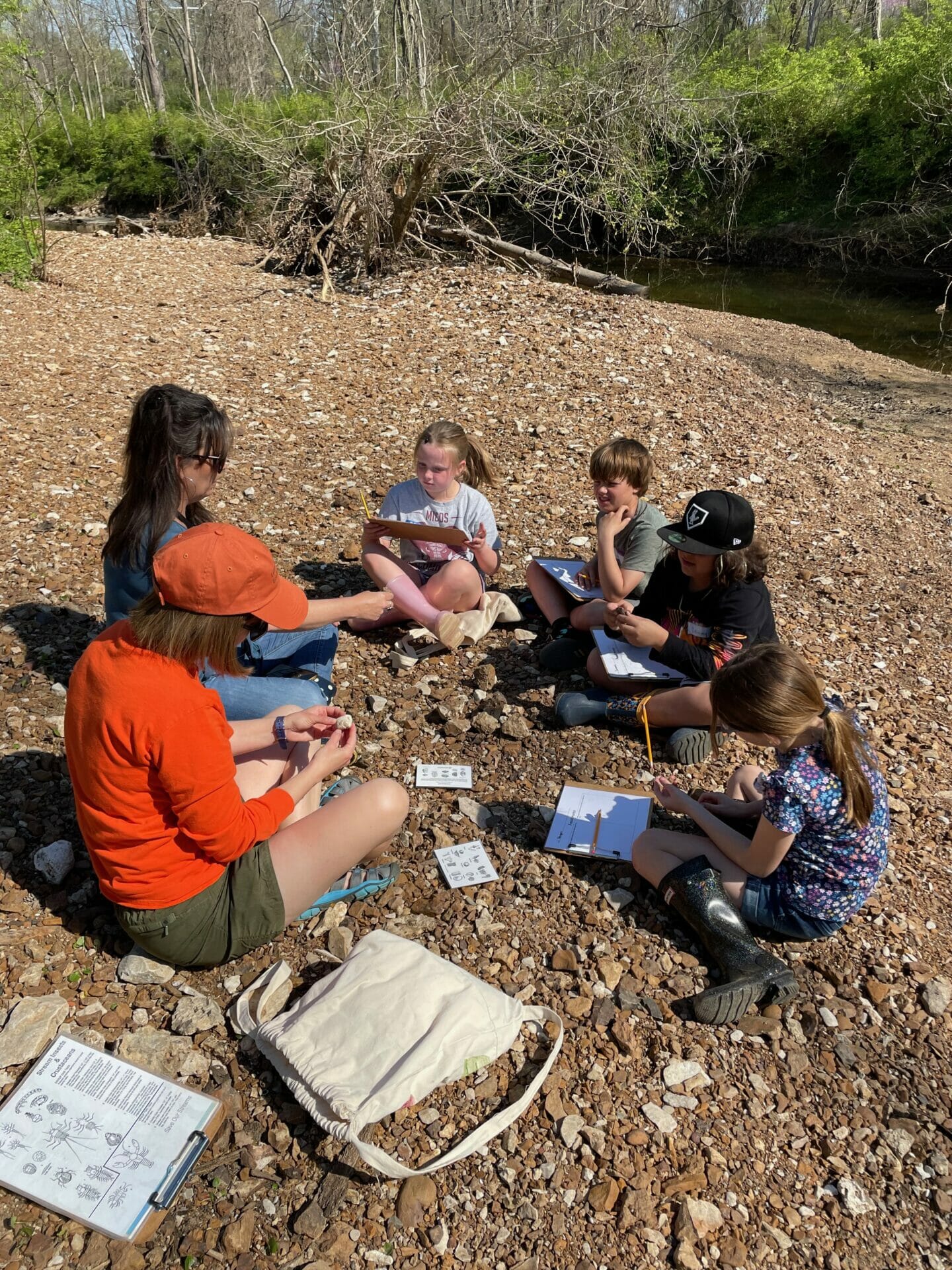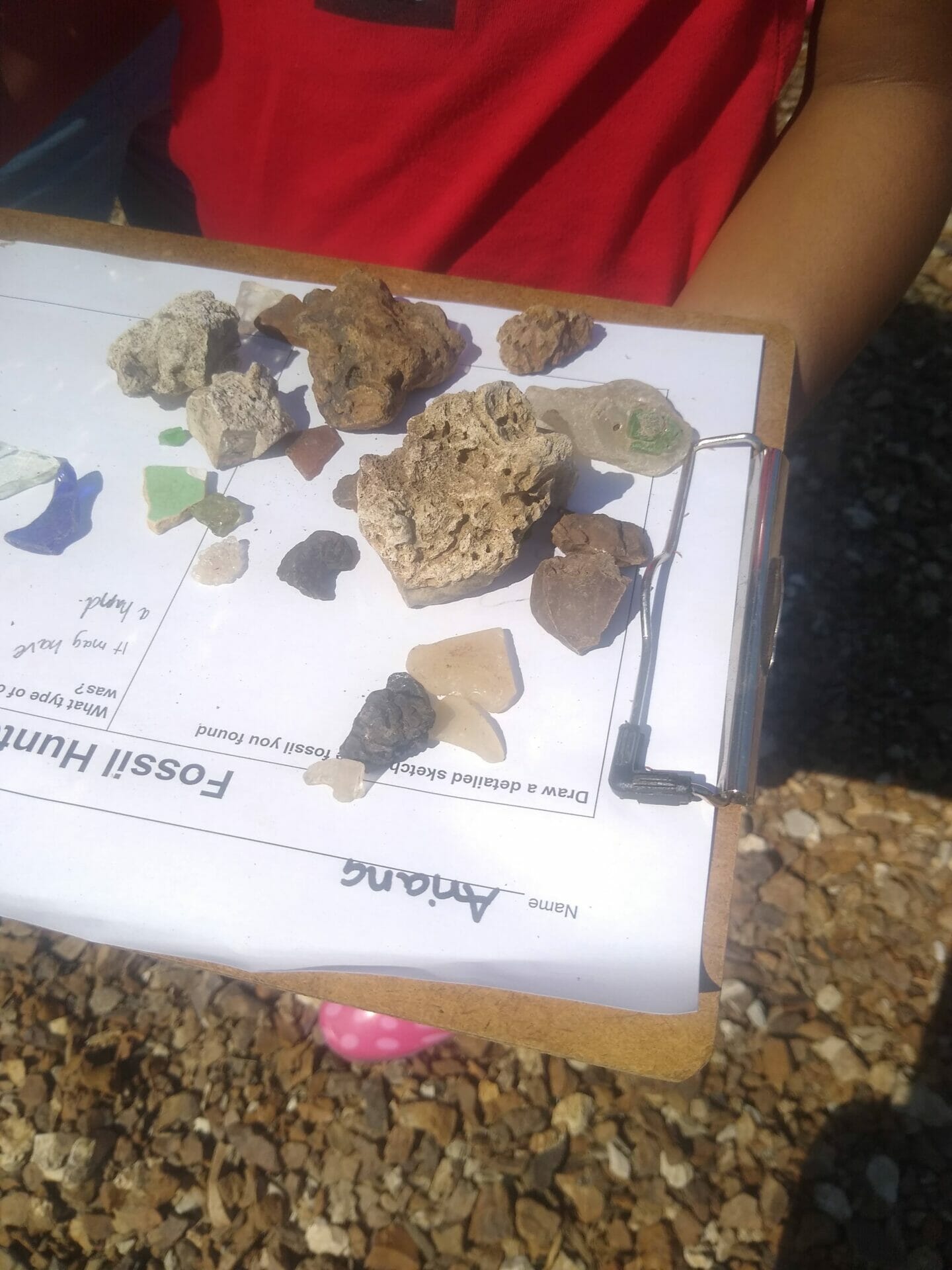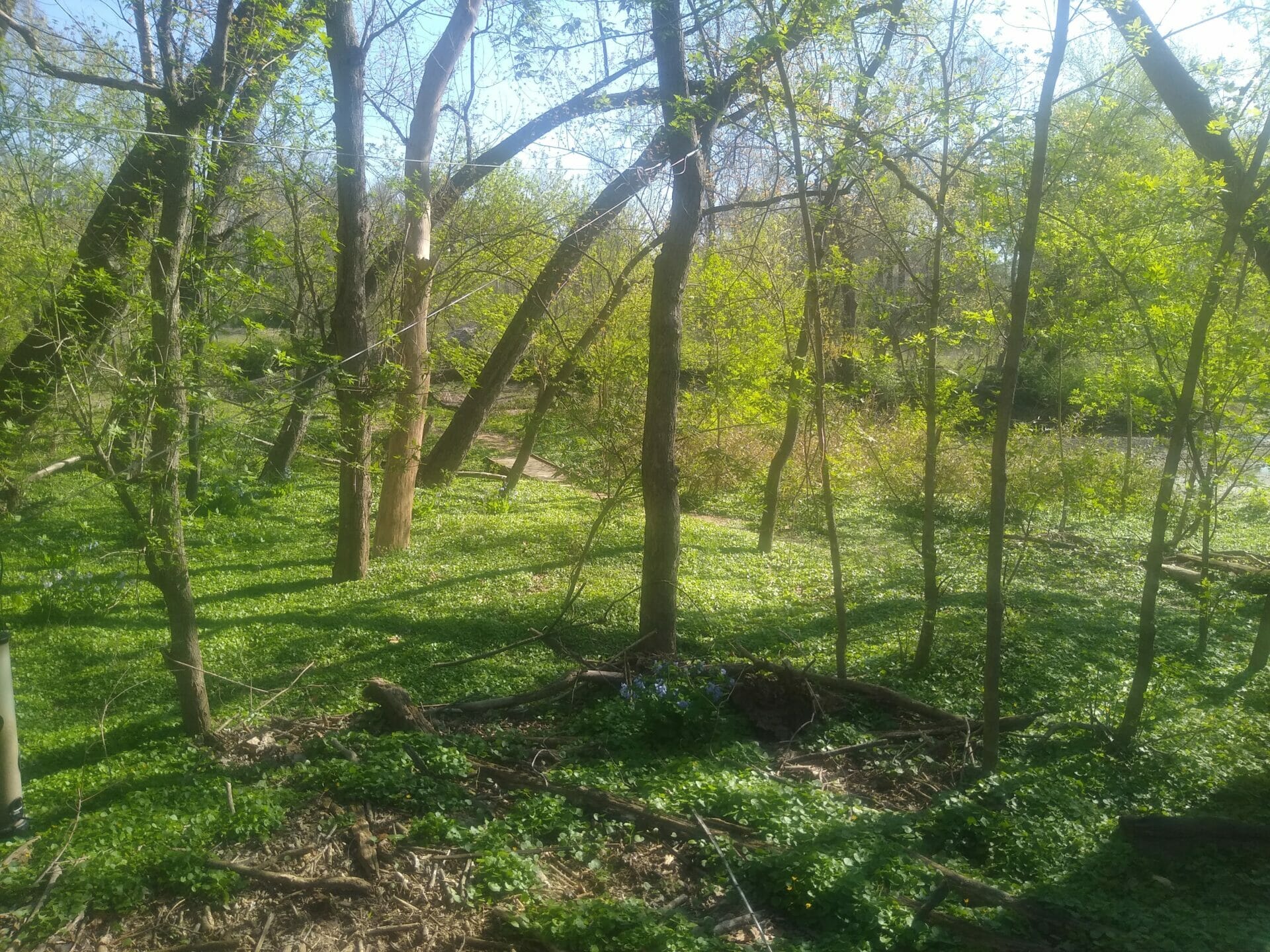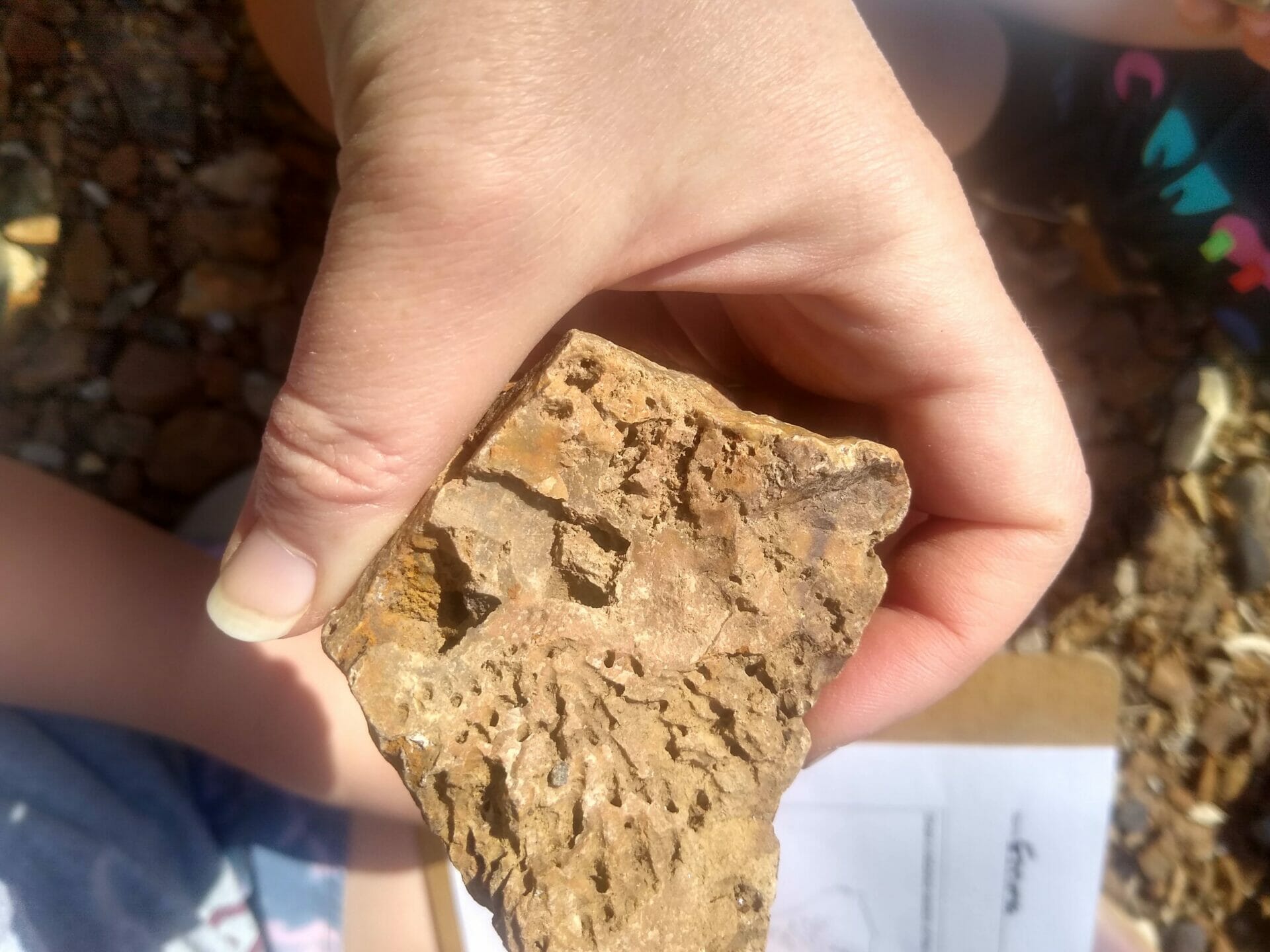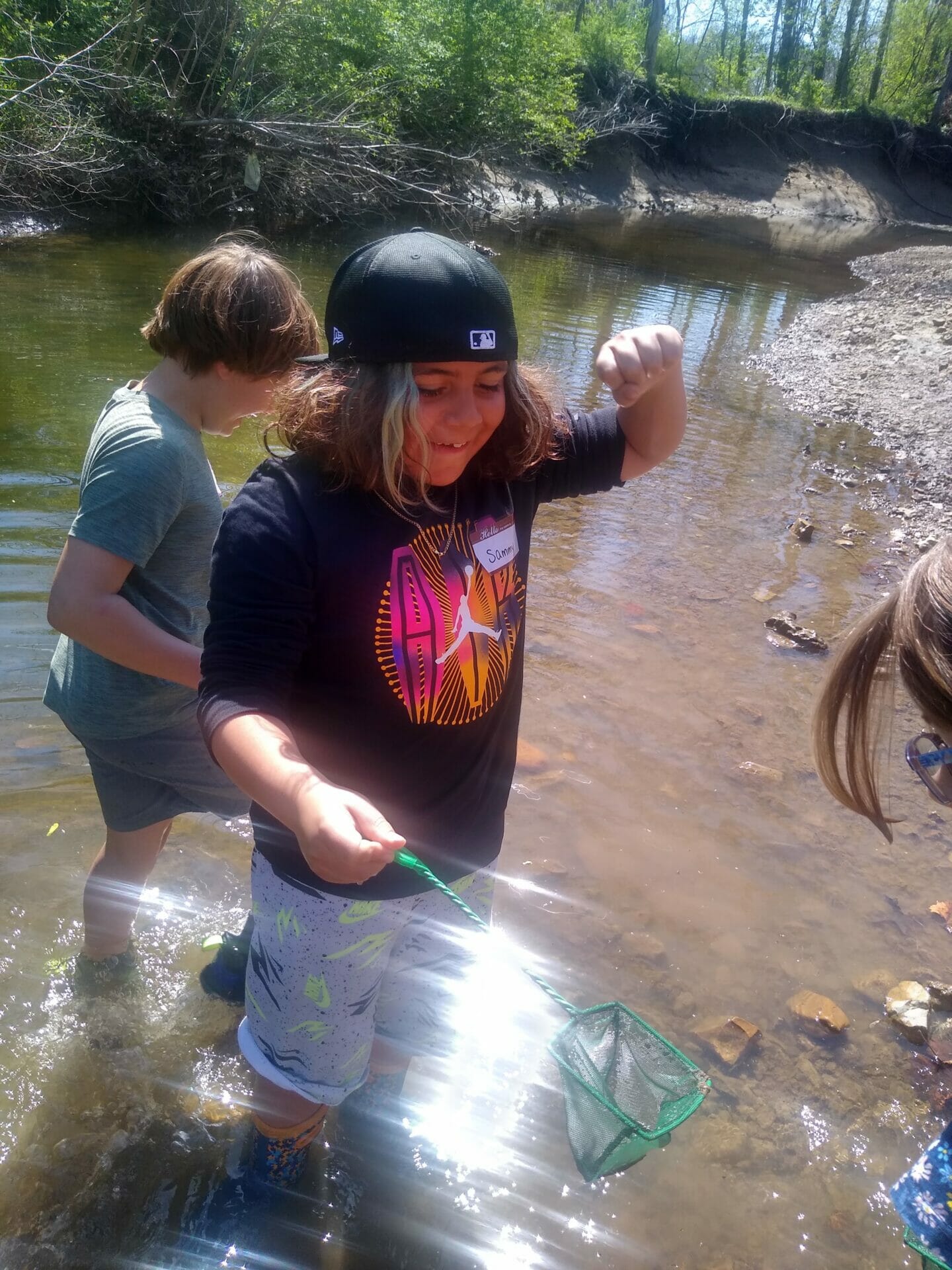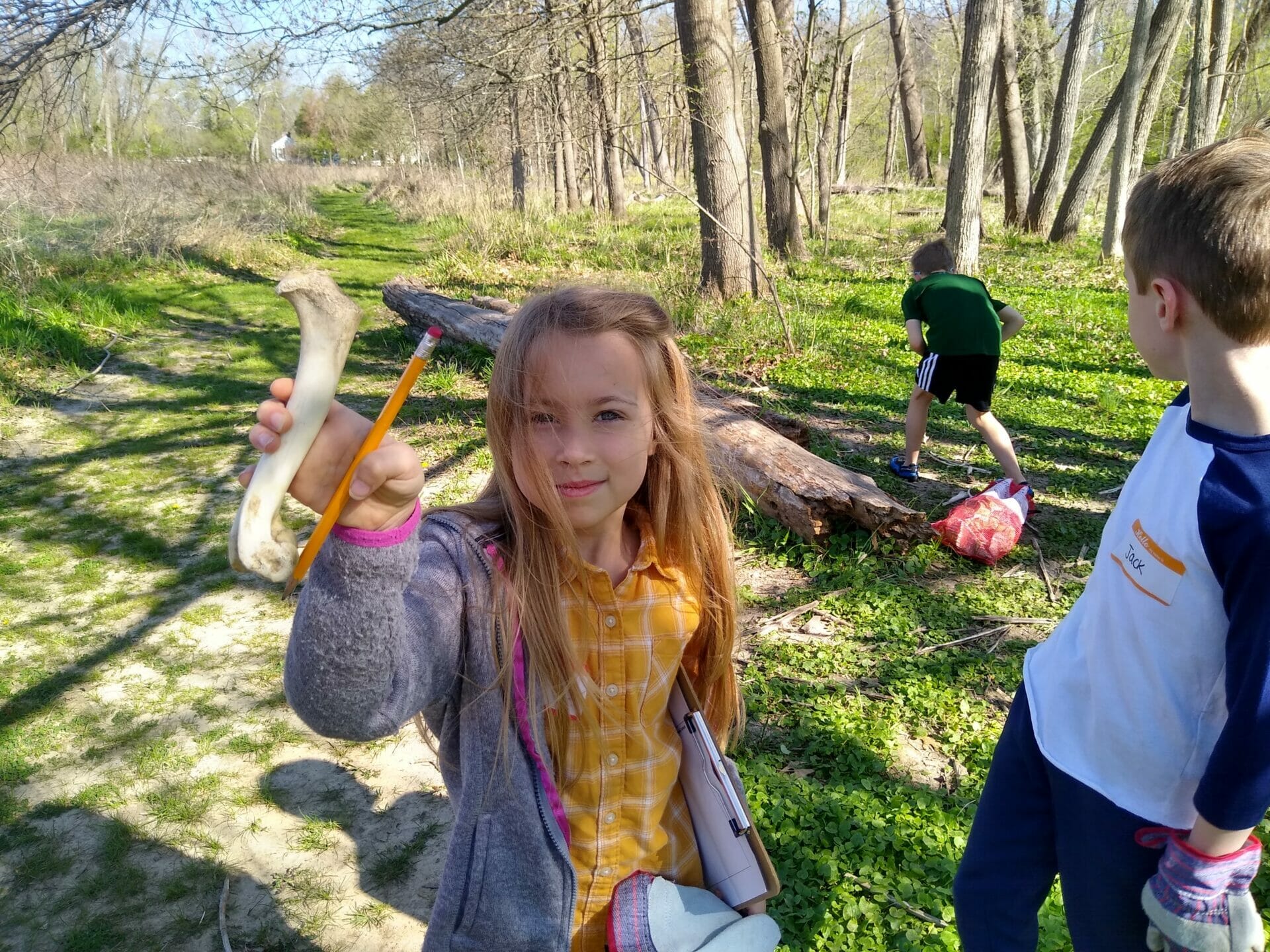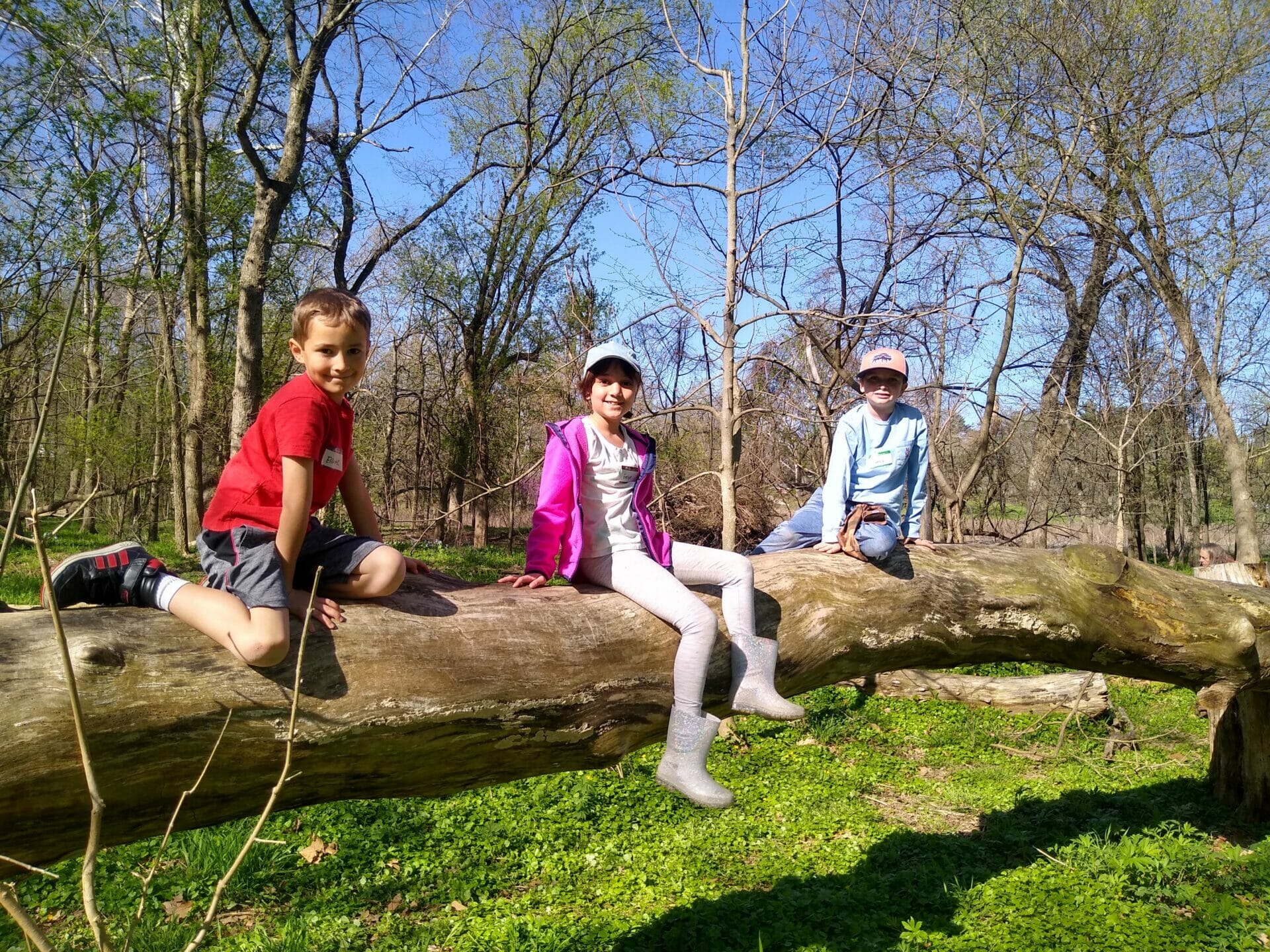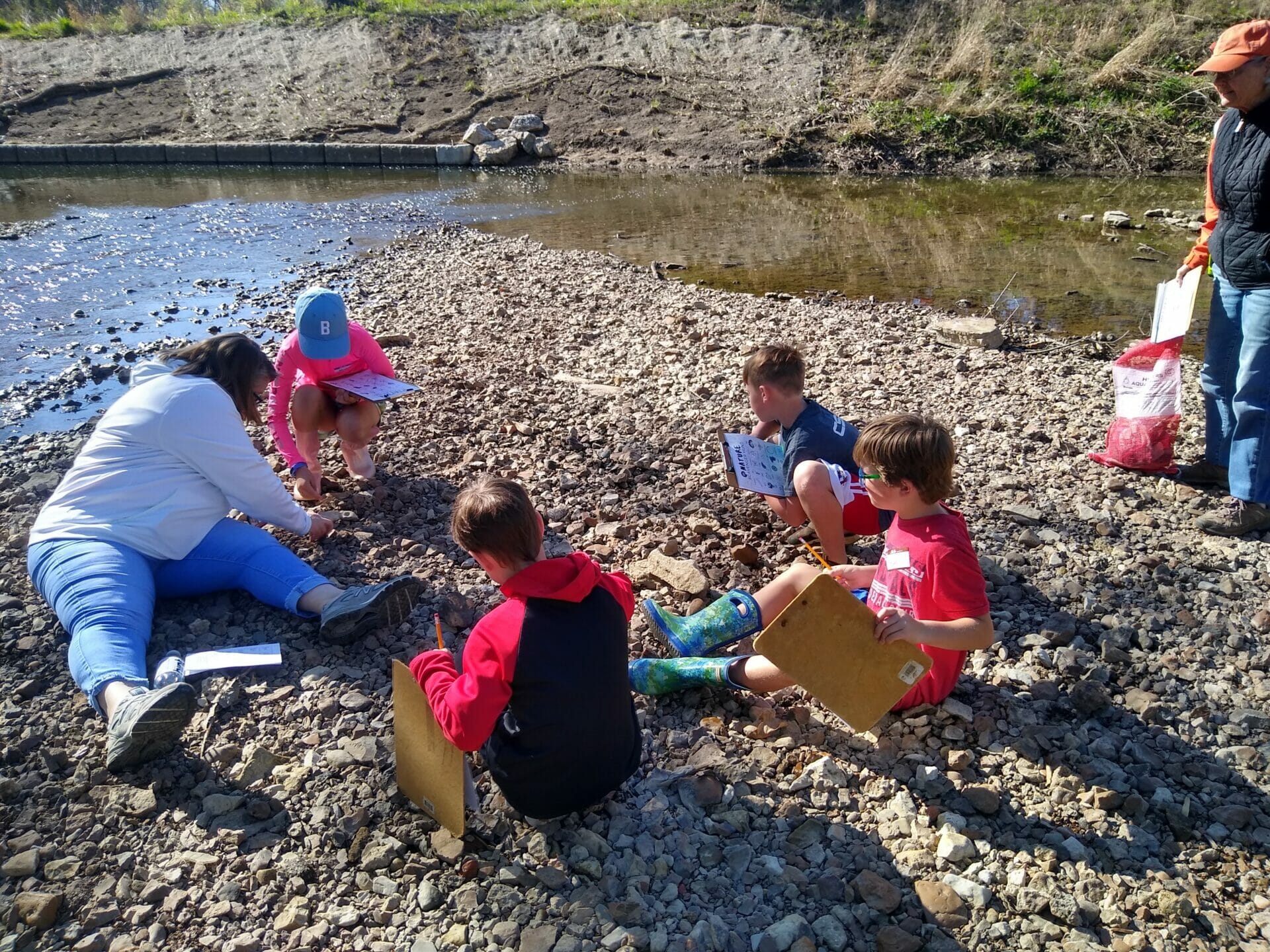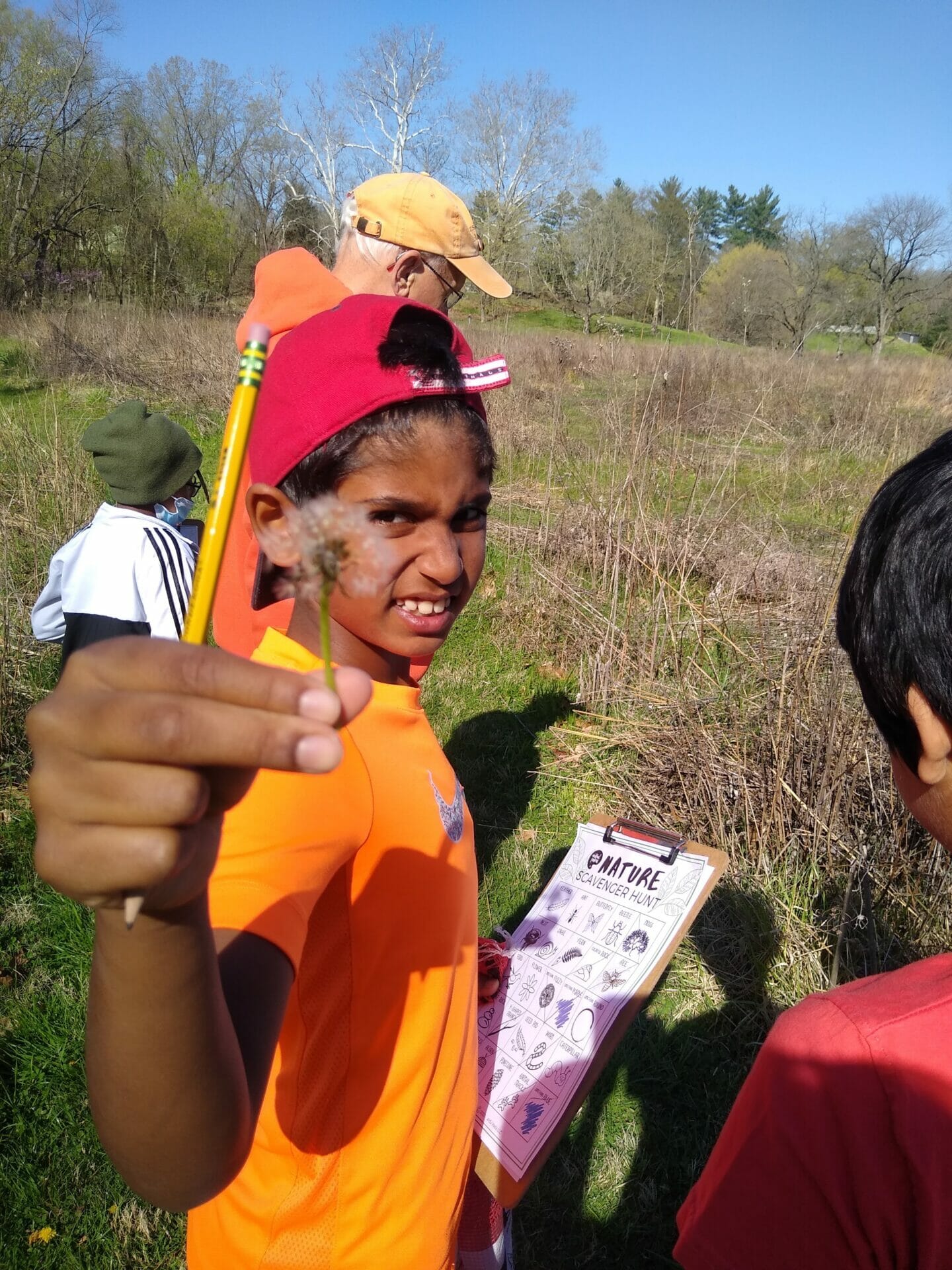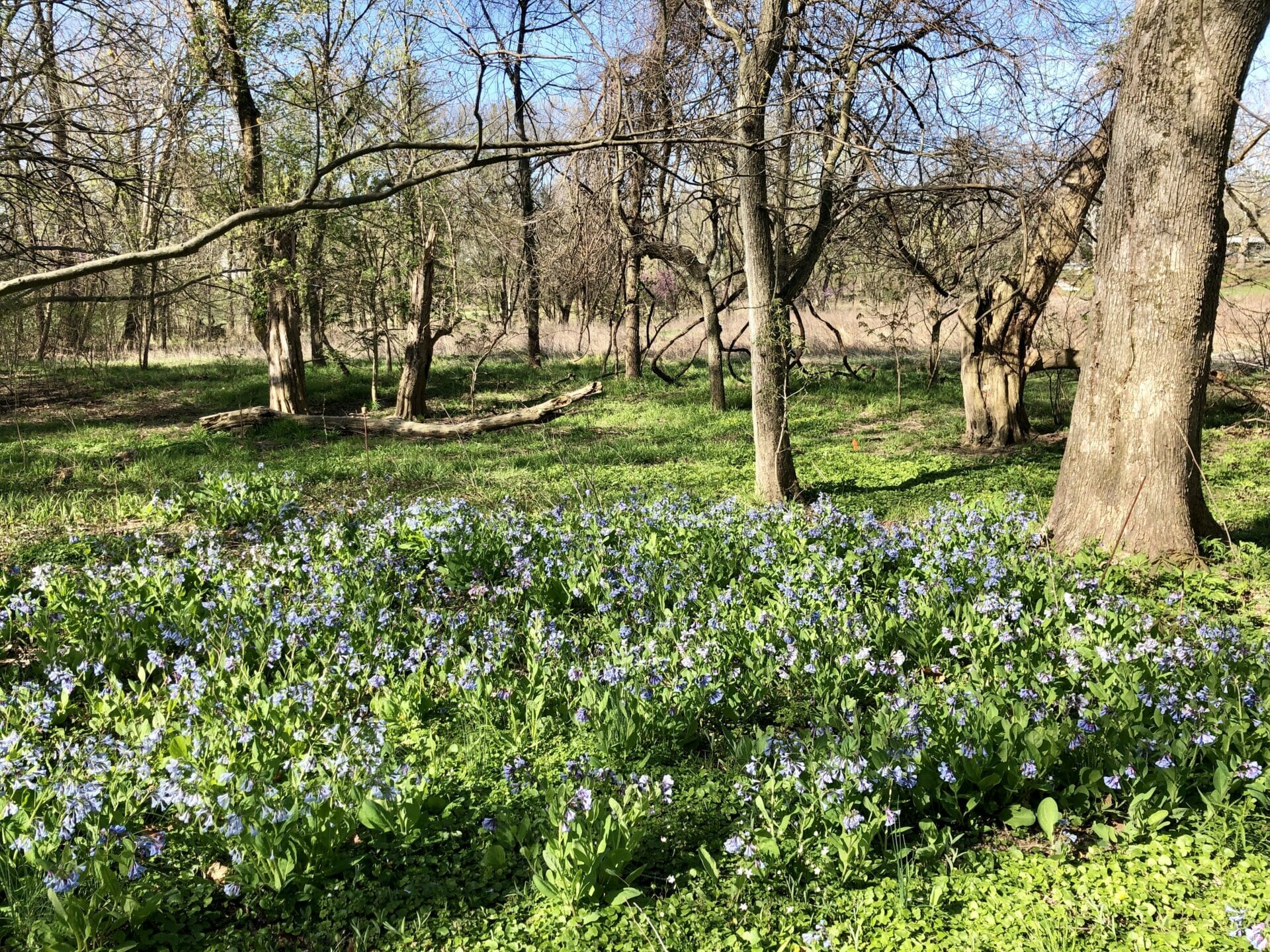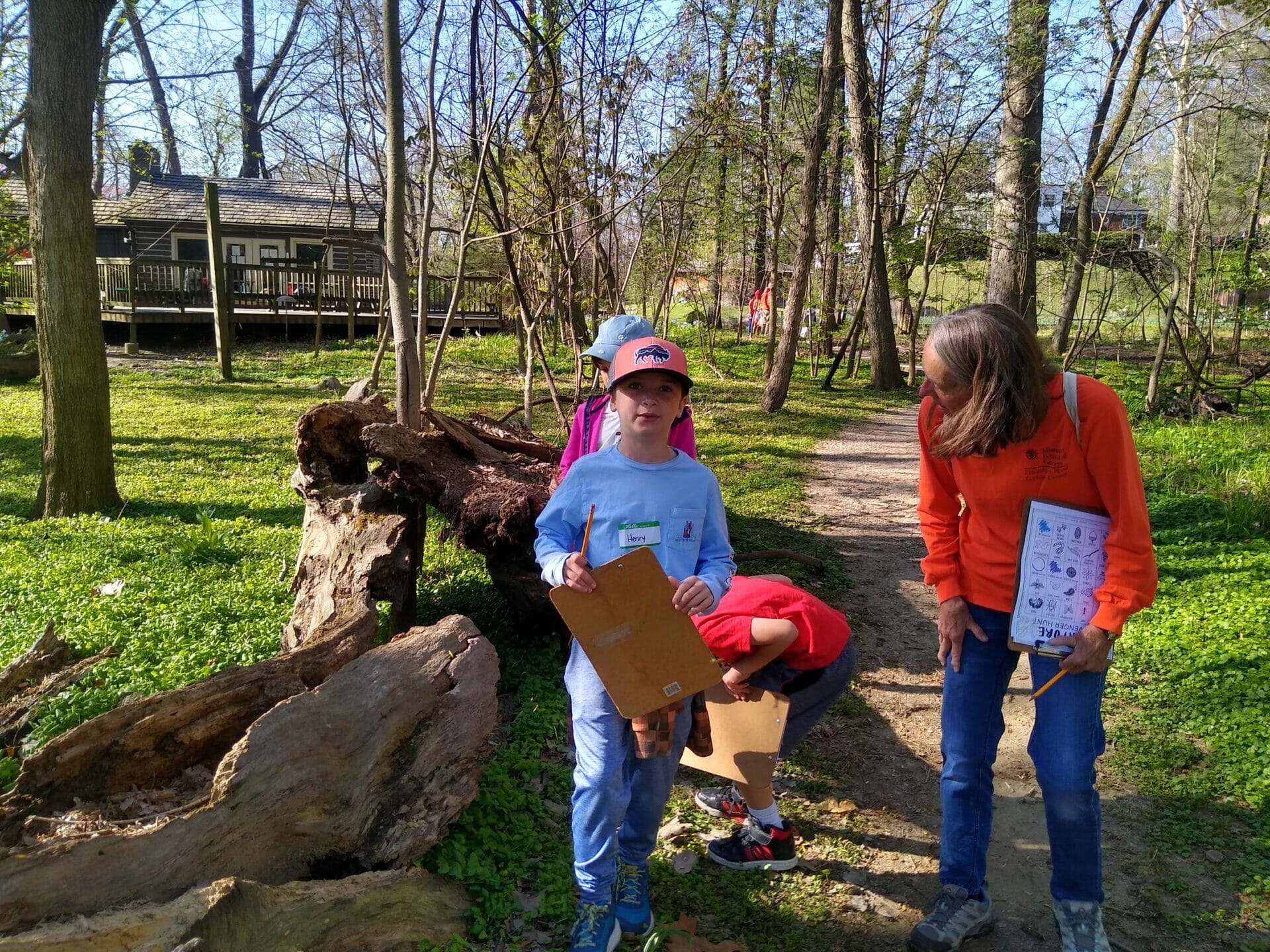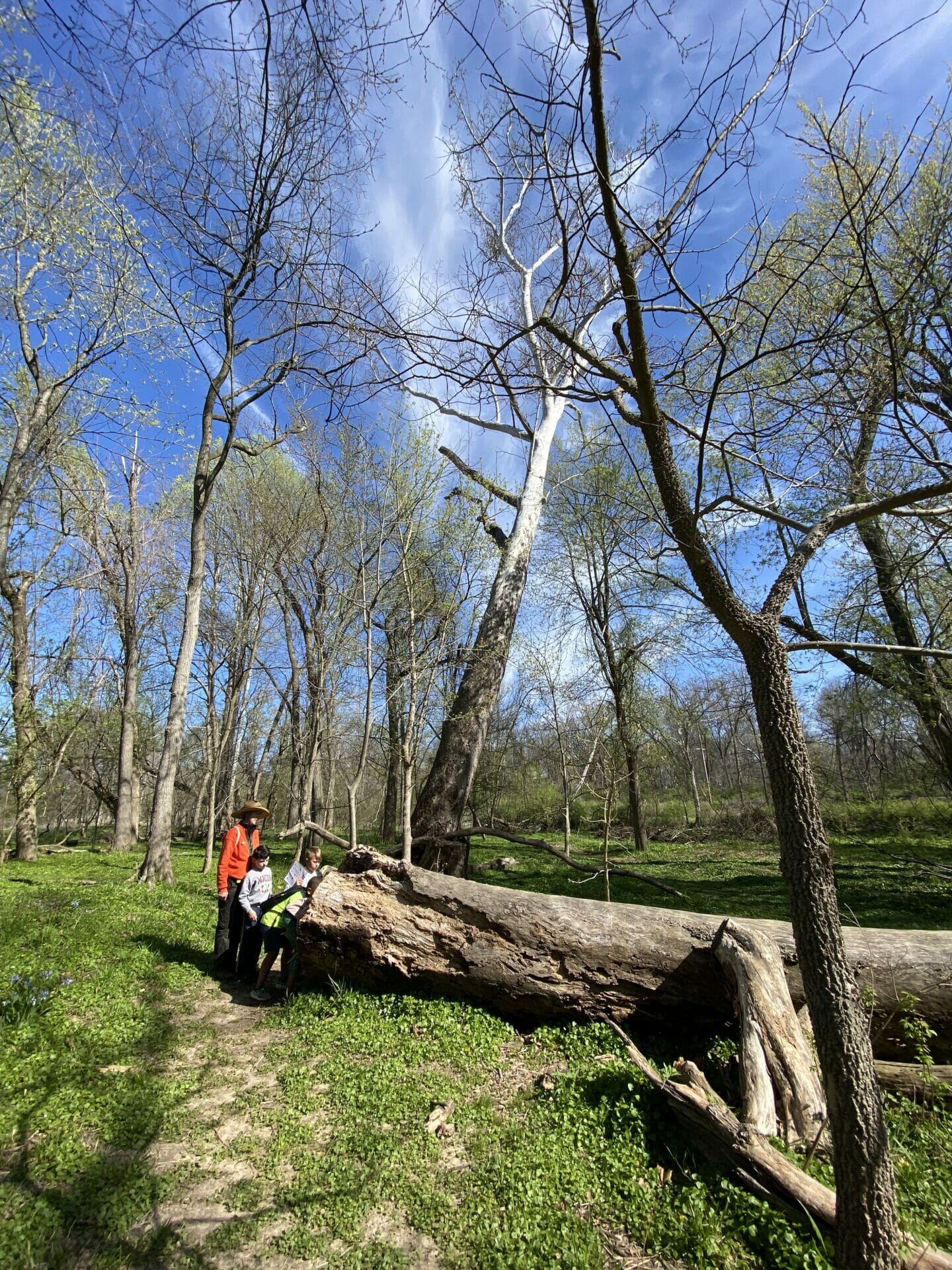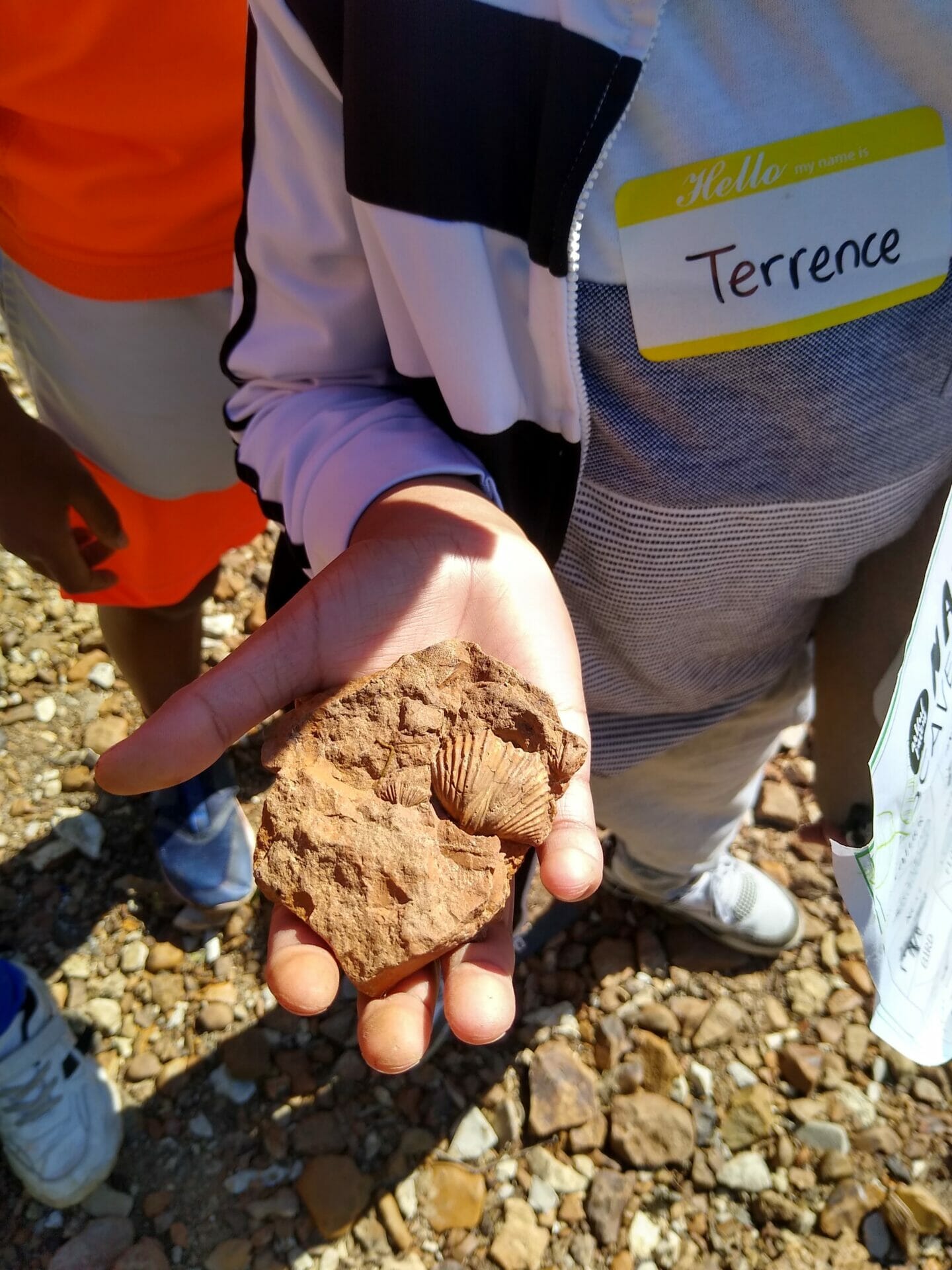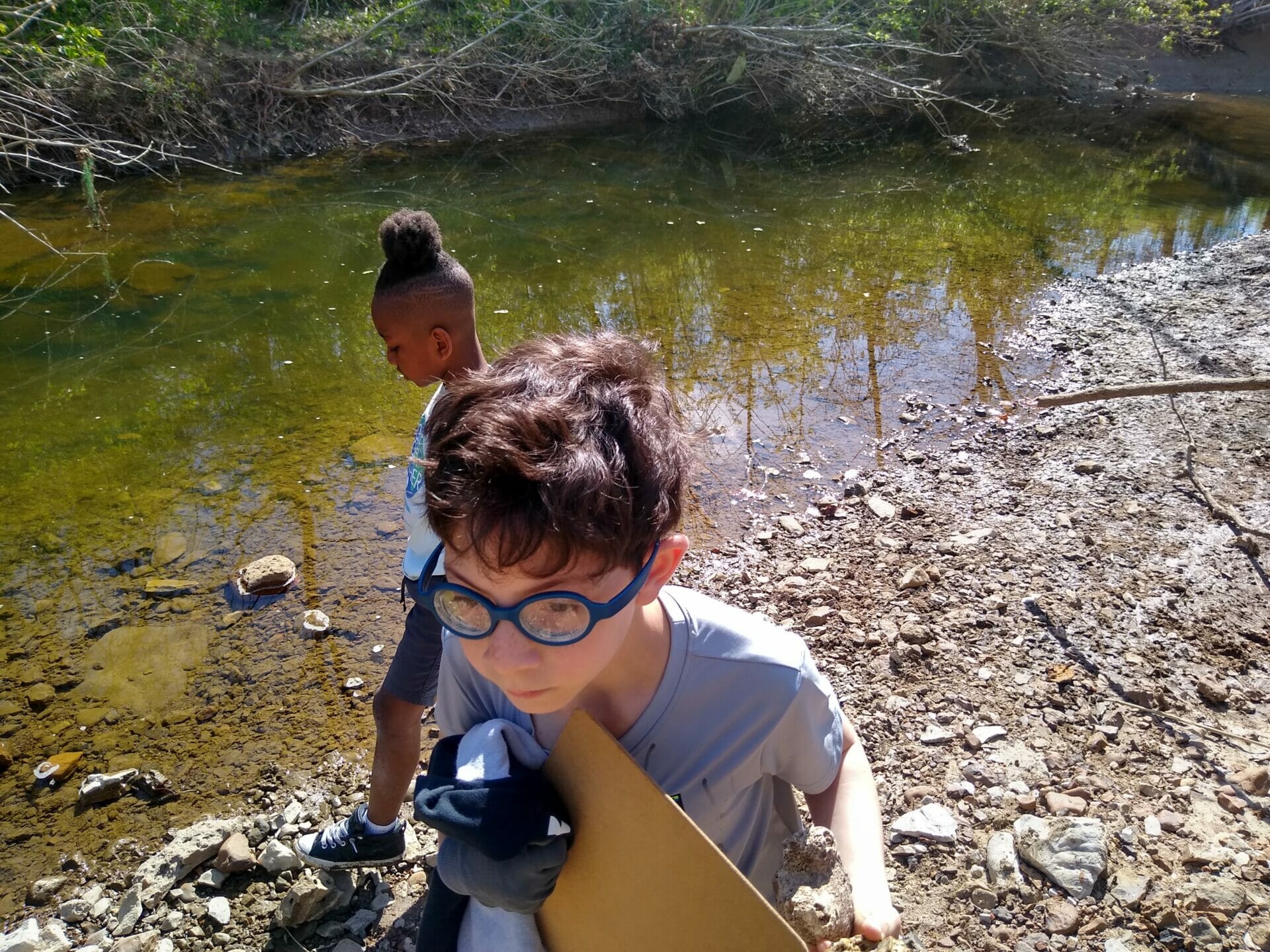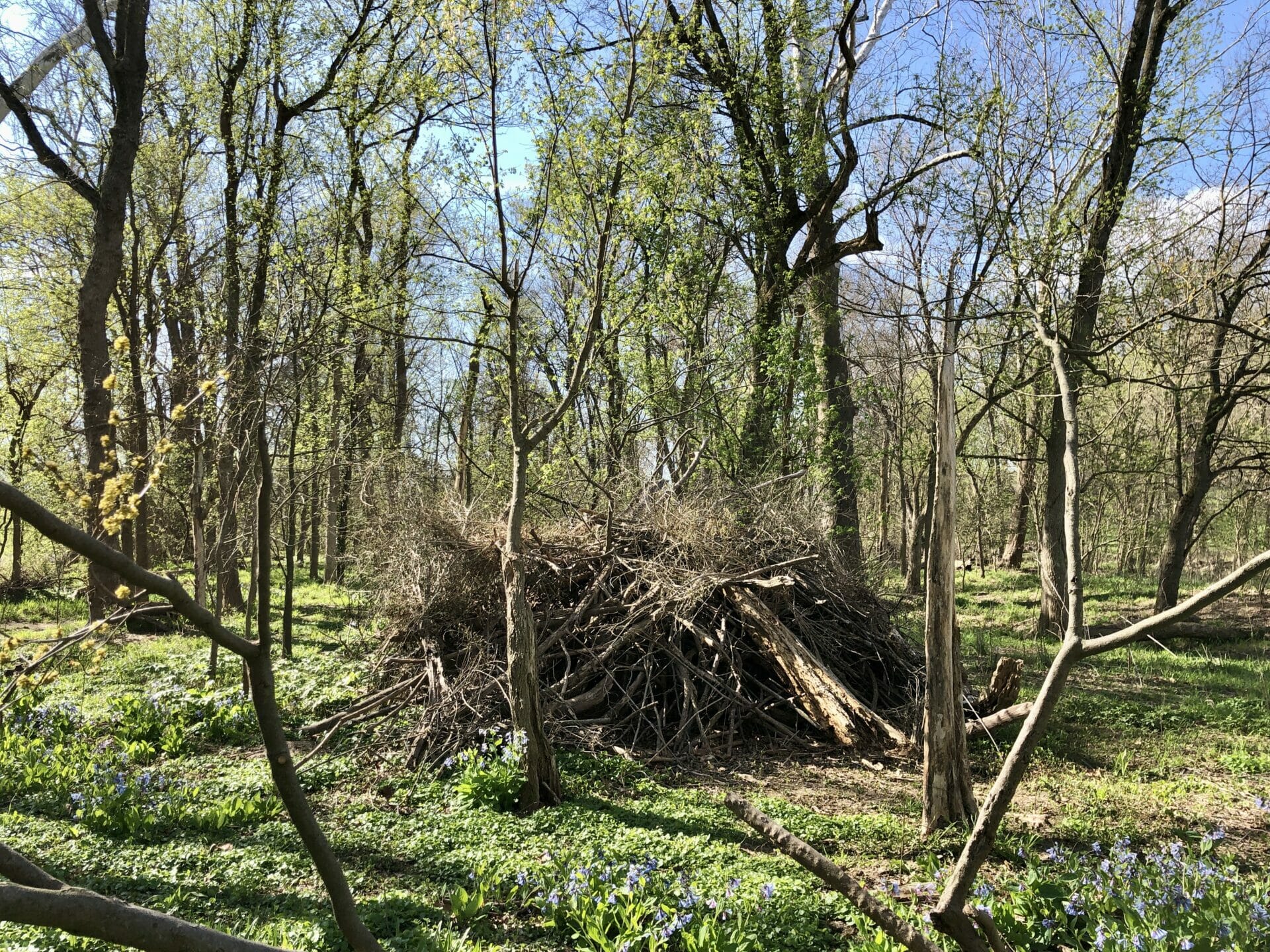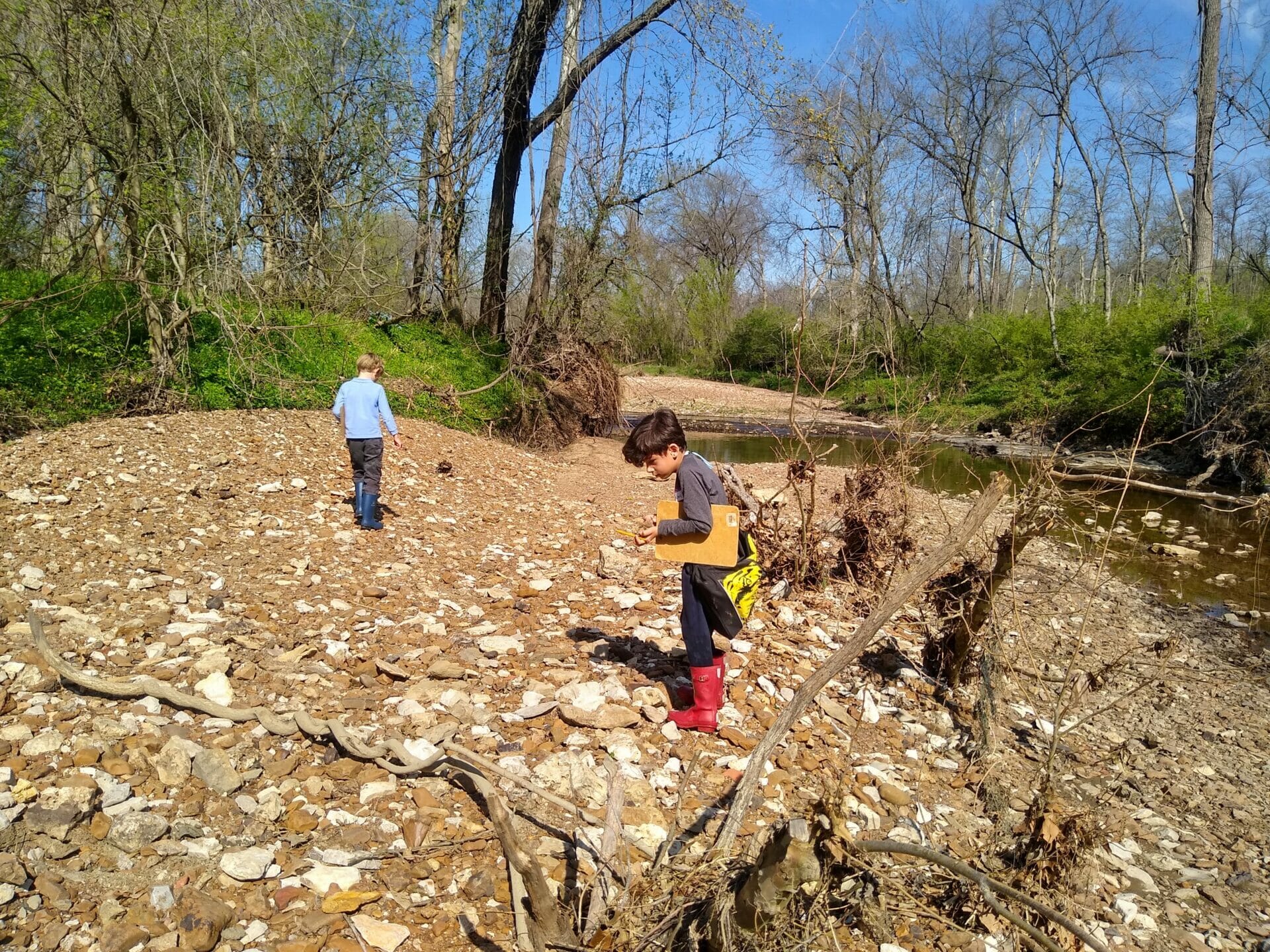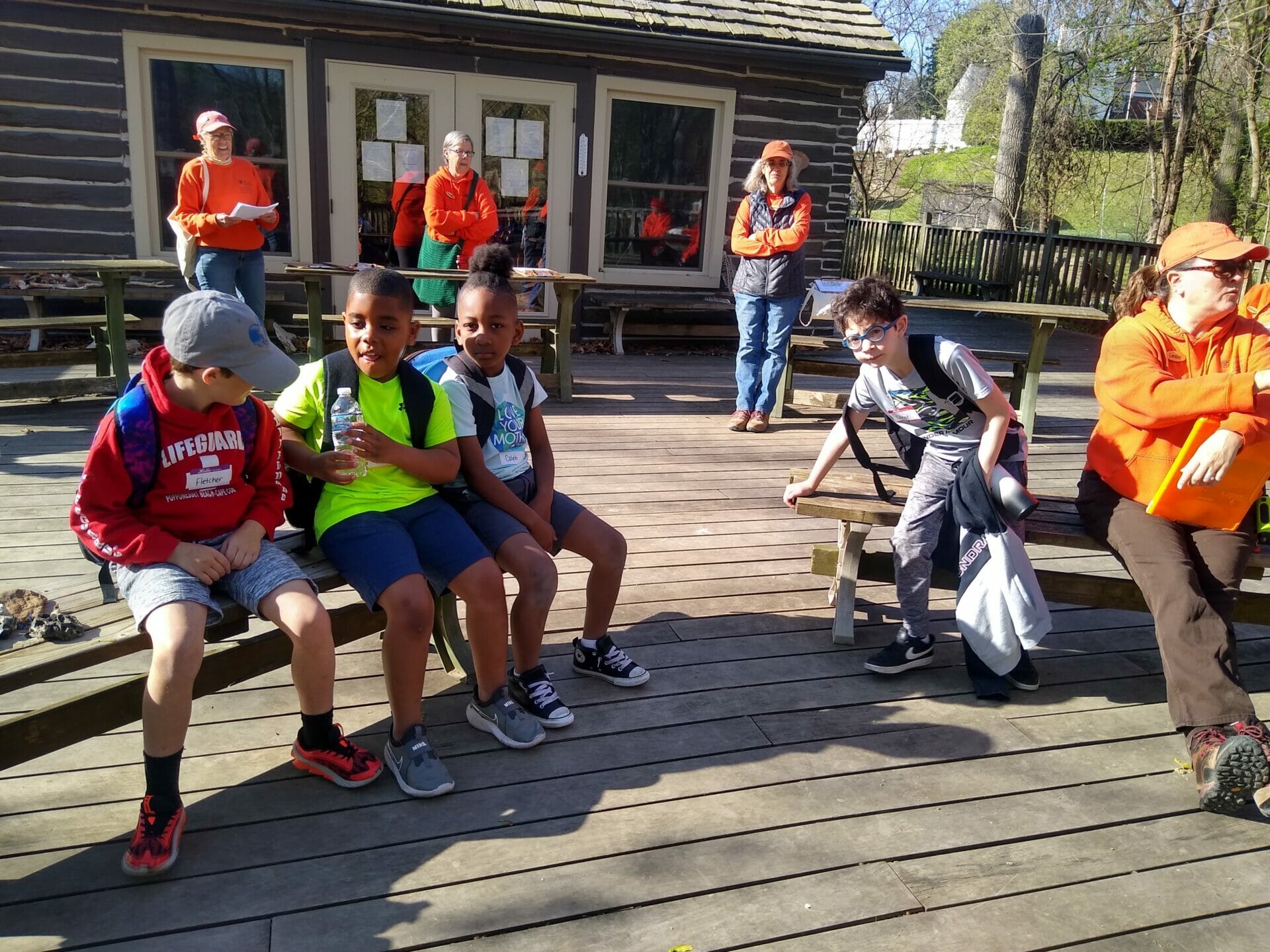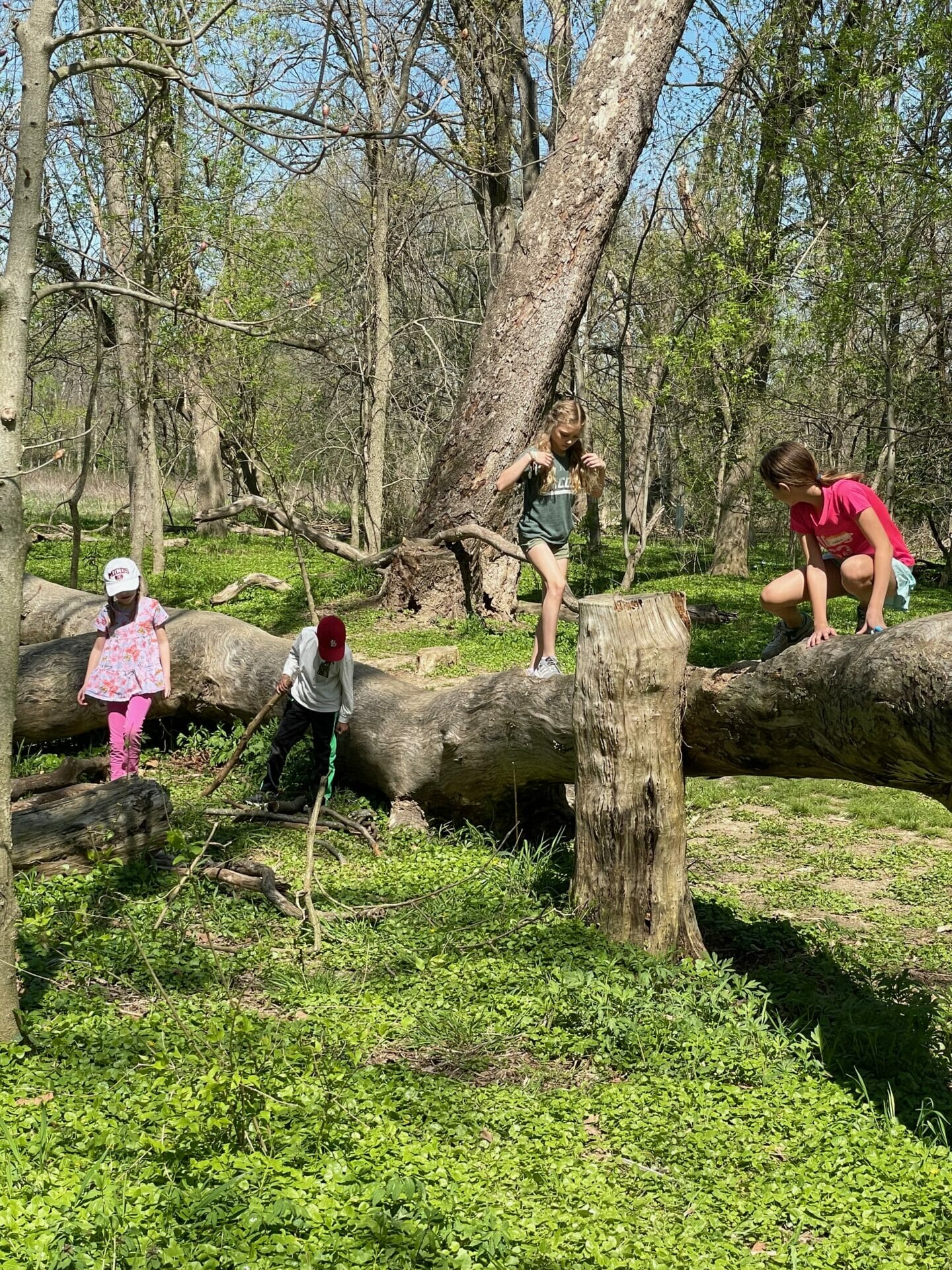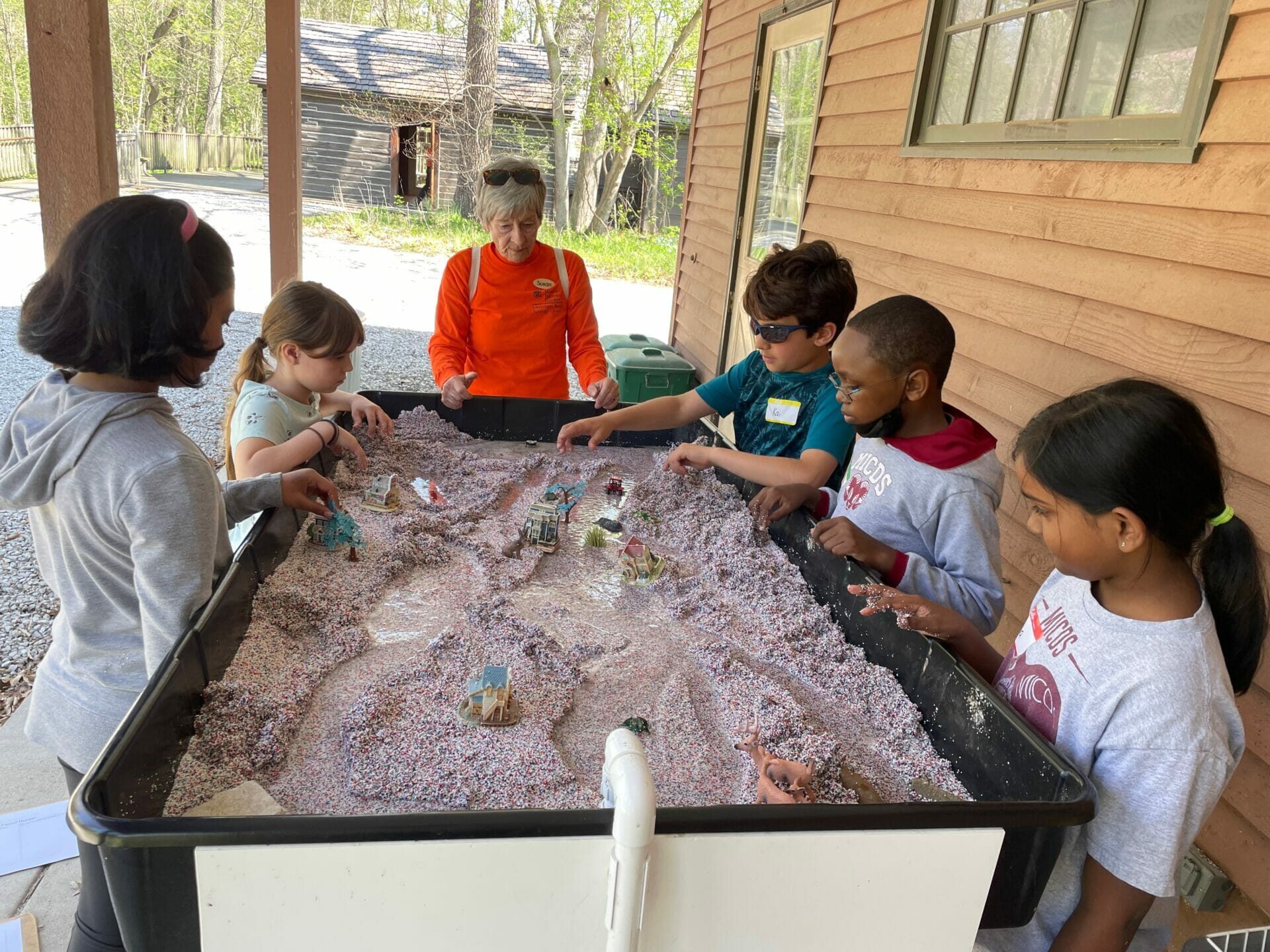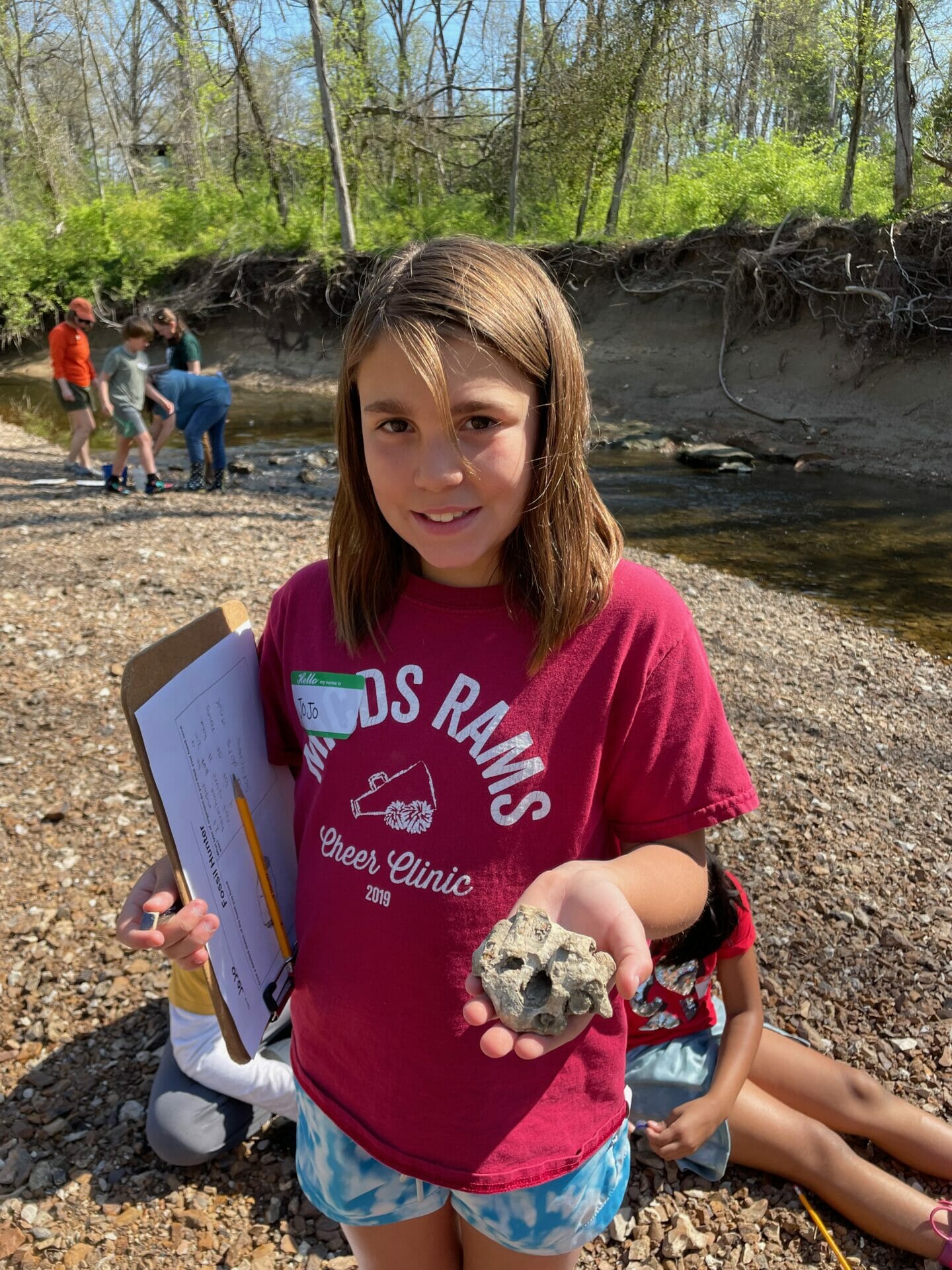Wading through the water at the Litzsinger Road Ecology Center in Ladue, only a few miles from the MICDS campus, offers a glimpse of what our neighborhood looked like millions of years ago. Second and third-grade students have recently completed field trips to the 34-acre center with Laura Pupillo, Lower School Science Teacher. Students have been studying fossils and continental drift, learning what past life looked like in Missouri, and discovering how Missouri used to be located closer to the equator. “It’s one thing to read about something in a book or hold a fossil in your hand in a class lab, but to actually go out into the field and see that these things exist in a place—and find it where it belongs in that place—can tell you a lot about the history of the earth,” Pupillo explained.
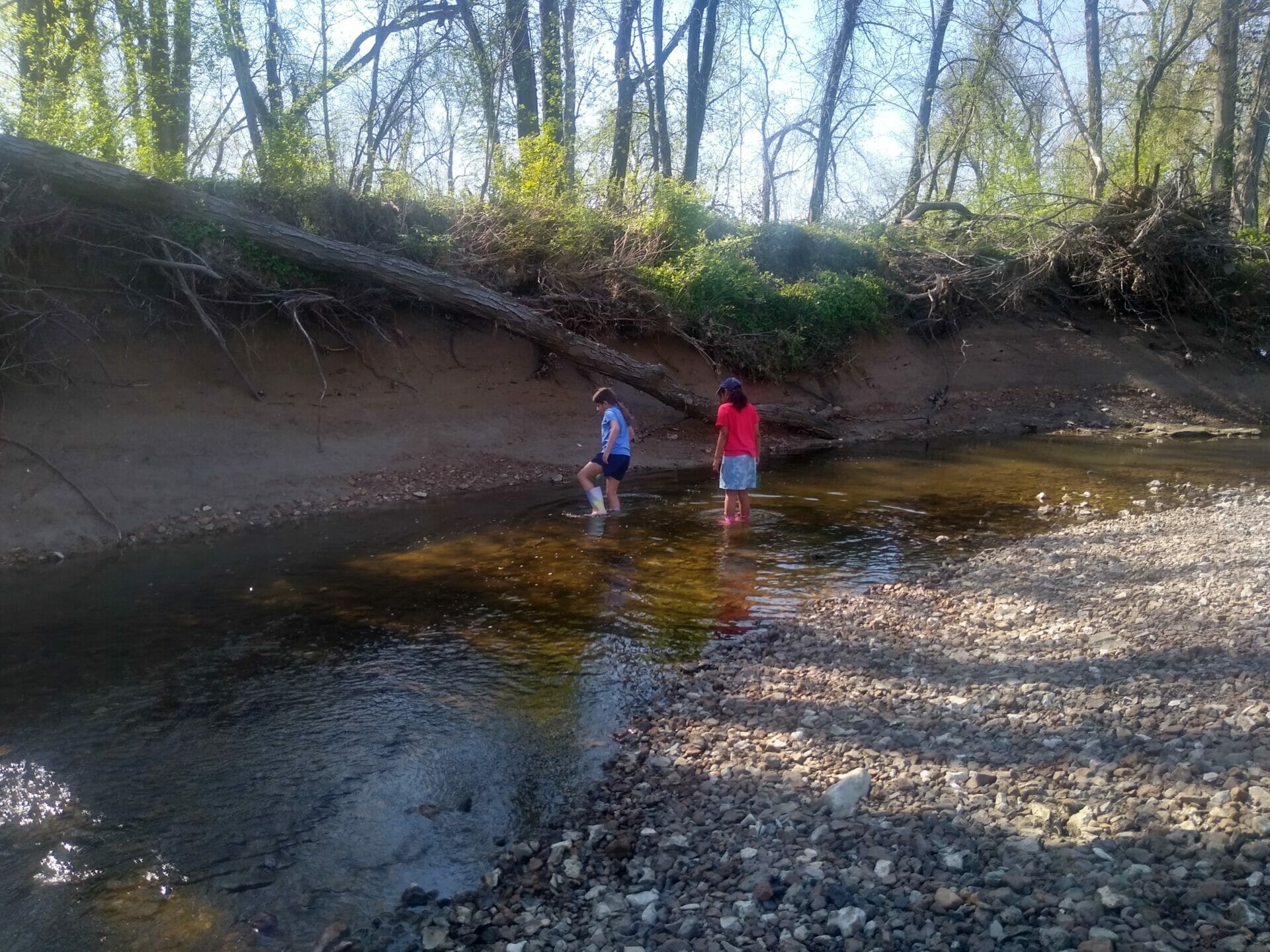
The ecology site, located at 9711 Litzsinger Road, isn’t simply a great resource because of its convenient location, it offers a wealth of opportunities for scientific study. “Litzsinger is just a great spot for finding fossils—every other rock has a fossil in it,” said Pupillo. “To pick up a rock that’s older than a dinosaur is pretty incredible.”
Third graders spent time in the urban stream that runs through the center’s property, studying the watershed and the macroinvertebrates that live there. Students discovered crayfish, water scorpions, mayflies, aquatic worms, and roly-polies. The experience served as a foundation for the Stream Team exercise that students will undertake with Pupillo as fourth graders. “There’s so much to learn from doing it here at school and doing it there (at Litzsinger) and comparing the two, because every watershed is different,” she said.
Second graders visited the ecology center on their first field trip as MICDS students. While there, they completed a nature scavenger hunt, learned how the biodiversity of plants and animals creates a balanced ecosystem, and participated in maintaining that balance by collecting more than a pound of plastic, glass, and garbage from the center’s waterway.
Pupillo appreciates the wonderful opportunity the Litzsinger Road Ecology Center provides for study and discovery. “Litzsinger is a really special place that has all these native woodlands and prairies, and you wouldn’t even know it’s there,” she said. “It shows the possibility that any place can be like that if we decide that we want to dedicate a little bit of land—even a backyard.”
Second-grade students will visit the Litzsinger Road Ecology site every spring. Third graders will visit in the spring and fall while fourth graders, in addition to their Shaw Nature Preserve field trip and Stream Team exercise, will visit every fall. What a wonderful, hands-on learning setting to bring these lessons in science to life!
